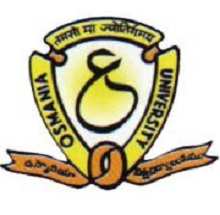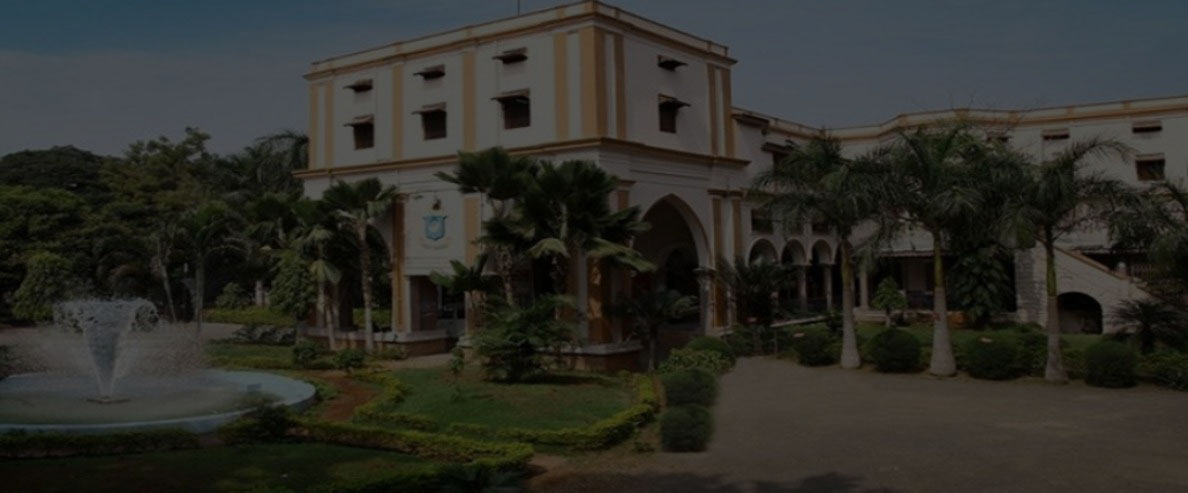
Osmania University - [OU]
- Hyderabad, Telangana
Osmania University is named after its founder, Nawab Osman Ali Khan, the seventh Nizam of Hyderabad who rather through a farman or Royal Charter, brought the University into existence in 1918. It is the seventh oldest in the Country and third oldest in South India. Though the need for the University for the Hyderabad State was felt, both by the intelligentia and the people for a long time, the initiative came from a civil servant, Sir Akbar Hydari, who was then the Home Secretary to the State Government. Sir Hydari, in a memorandum to the Education Minister in Early 1917, emphasized the need to establish a University of Hyderabad with 'Urdu' as the medium of instruction "as it is the language of the widest currency in India, official language of the State, and it is a language which is understood by a vast majority of the population of the State." He believed that higher education must have its foundations deep in national consciousness.
The propitious moment, however, came a few months later on 26th April, 1917 when a Firman was issued for the establishment of the University. The Firman also detailed the 'Mission' and 'Objectives' of the University to be that:

the ancient and modern, the oriental and occidental arts and sciences are synthesized in such a manner that the defects of the present system of education are rectified
the ancient as well as modern methods of physical, intellectual and spiritual education are to be fully utilized along with an effort for the propagation of knowledge, the moral improvement of the students is regulated on the one hand, and research work of a high order in all branches of knowledge is conducted on the other.
Though the medium of instruction of the University was 'Urdu', an Aryan language, that has direct kinship with other languages of the country, instruction of English, as a language, was made compulsory for each student.
One of the basic ideals of Osmania University is to achieve an intellectual synthesis of oriental and occidental learning of the best that has been thought of and said, both in the East and in the West. Further it aims at a cultural synthesis (as reflected in its architectural variety), the development of a national ethos, and the creation of an academic and social environment in which 'National Integration' is not a nebulous idea but a tangible reality.
The birth of Osmania University almost coincided with the birth of a new order arising from the ashes of the First World War. Its origin was basically patriotic. It was a revolt against the supremacy of the foreign language in India. On the revolutionary experiment of using a regional language as a medium of higher education the Nobel Laureate poet, Rabindranth Tagore, observed:
"I have long been waiting for the day when, freed from the shackles of a foreign language, our education becomes naturally accessible to all our people. It is a problem for the solution of which we look to our Native States, and it gives me great joy to know that your State proposes to found a University in which instructions are to be given through the medium of Urdu. It is needless to say that your scheme has my fullest appreciation........................"

Similarly, complimenting the ruler of the State, Sir Michael Sadler wrote:
"The proposal to make the experiment of recognizing the vernaculars as the medium of instruction in the Osmania University, requiring in addition a command over the English Language, is most opportune, and upon the successful issue much will depend..."
The establishment of Osmania University symbolizes a renaissance in the Indian educational system. Throughout its existence, of over nine decades and in spite of several vicissitudes, it has shown a remarkable resilience and has grown into one of the major universities of India. It has a vast sprawling campus set in a picturesque and idyllic surroundings. Buildings of great architectural elegance and variety enhance its beauty. Availability of the latest facilities make it a very modern University. Alumni of the University have distinguished themselves in several walks of life; they include outstanding figures in public life, like one of the former Prime Ministers, Chief Ministers, Ministers, Parliamentarians, Legislators, eminent scholars, educationists, diplomats, administrators, lawyers, doctors, engineers, scientists, writers, sportsmen and men of arts and culture. While quite a few of them have won international acclaim for their excellent work, and have contributed to the fair name of the country abroad, as a matter of great satisfaction, quite a few of them, who had their higher education and training abroad later, saw that their mission was here and have contributed significantly to the national effort.
| The development of the University may be divided into four phases, viz. | |
|---|---|
| 1st Phase | 1918 to 1947 |
| 2nd Phase | 1948 to 1968 |
| 3rd phase | 1969 to 1993 |
| 4th Phase | 1994 onwards |
First Phase
The first phase was characterised by Urdu as the medium of instruction in all branches of higher education, including Medicine and Engineering. During this time, efforts were made to establish a number of teaching departments as well as to structure academic programmes. The Departments of Chemistry, Civil Engineering, English, History, Mathematics, Physics, were all started at this time. The first 30 years saw the initiation of several new disciplines, like Sociology (1937-38), Geography (1942), Zoology (1924), Botany (1930), Geology (1936), Education and Law (1923), Engineering (1929), Medicine (1926-27) and Agriculture and Veterinary Science (1948).


The University appointed eminent scholars as Faculty in these disciplines. It made concerted efforts to attract the best talent, not only from within the Country but also from outside. This phase also saw the introduction of Under-Graduate Programmes (1925), Post-Graduate Programmes (1925) and Ph.D. Programmes (1938) in several of the faculties. Further, some of the premier institutions that were earlier established in the State (namely, the Nizamiah Observatory, the Nizam College, Medical College, Teachers Training College, and the Law School) were transferred to the University at that time.
As the University was established without much infrastructure, the University Departments and Offices were initially located at different places in the city. It was only in 1934 that the University was shifted to the present campus. The inauguration of the new Campus, along with the inauguration of the Arts College in 1938, is one of the historic events in the annals of the University.
Second Phase
The Second phase of the University spans the period 1948-1968, when in 1968 the University celebrated its 'Golden Jubilee'. The year 1948 was historic for two reasons. In the first place, the princely State of Hyderabad became a part of new Independent India. Synchronizing with this event, the University cast a lingering backward glance, took the best of the traditions on which it was founded, and turned towards the future. As part of this process Urdu was replaced by English as the medium of instruction. The University witnessed unprecedented increase, both in the number of disciplines and the number of students. The new Departments created during this phase, include Hindi (1948-49), Political Science (1947-48), Electrical Engineering, Mechanical Engineering (1949), Journalism (1954), Chemical Engineering (1951), Public Administration (1956), Library Science (1959), Electronics and Communication Engineering (1959), Statistics (1966), Genetics (1966), and Geophysics (1967). In order to give an impetus to the learning of foreign languages, the University started Diploma programmes in French and German (1954-55) and Italian (1957-58). As the number of Social Science Departments increased, the Faculty of Social Sciences was carved out from the Faculty of Arts in 1964-65, in order to give them a better identity..
This phase also witnessed considerable growth in the research activity in the University. In order to give it the required thrust, Ph.D. programmes were also started in those Departments and Faculties where they did not exist earlier. Also new courses were designed to meet the emerging needs of an Independent India. M.Sc. courses in Astronomy, Biochemistry and Geophysics were introduced in the Faculty of Science; M.A. courses in Psychology, Public Administration, Linguistics and Tamil were introduced in the Faculty of Arts; Bachelors Degree Courses in Home Science, Nursing and Music were also started. Diploma programmes in Library Science, Journalism, Physical Education and Child Health were introduced; Graduate programmes in Education and Post-graduate Diploma in Business Management were the other additions. In the Faculty of Medicine, the programmes were either restructured or new courses started. The University thus responded to the new imperatives of higher education by giving thrust to research, creating new departments, and designing new courses in the existing departments. The new courses provided new skills that enabled the students to enter the job market better prepared.
Infrastructure development also got a high priority during the Second phase. The University Main Library, with a floor area of 62,000 sq.ft. was commissioned in 1963. The Law College, Department of Geophysics, the Administrative Building and other buildings to house colleges, hostels and various University Services were constructed manifesting University's growth. Women's education also got an impetus when the Women's College, which was earlier operating from temporary buildings, moved to its present location in 1948.
To meet the ever-increasing demands of higher education of the region, the University permitted a number of affiliated colleges to be started under private management. Consequently, the number of students as well as the colleges increased substantially during this period. By 1967, there were about 45,000 students, including 7, 500 women students studying in 48 different constituent and affiliated colleges.
Third Phase
The period between the Golden Jubilee (968) and the Platinum Jubilee (1993) can be considered to be the Third Phase. During this phase, the University also witnessed considerable growth in research and development activity. With financial support from National and International agencies several inter-disciplinary Research Centres were established. The Regional Centre for Urban and Environmental Studies (1970), Institute of Genetics (1978), Research and Training Unit for Navigational Electronics (1982), Centre for Area Studies (1983), Audio-Visual Research Centre (1983) and English Language Teaching Centre (1988) are a few examples. New Departments to be created during the period include the Department of Biochemistry (1972), Microbiology (1974) and Applied Geochemistry (1991). To strengthen its infrastructure, the University established the University Computer Centre (1975).
In order to make higher education accessible to the deprived and disadvantaged, the Centre for Distance Education was established in 1977. It now offers Under Graduate and Post-Graduate courses in Arts, Social Sciences, Commerce, Management and Sciences, apart from job oriented programmes. The Academic Staff College was started in 1987 with the support of the University Grants Commission (UGC), to train and orient college and university teachers both in pedagogy and in areas of specialization
Keeping in view the imperatives of rural development, particularly human resources development and rural industrialization, the University embarked upon the strategy of decentralization of higher education, by establishing Post-Graduate Centres in the districts. One such Centre, the Post-Graduate Centre at Warangal, subsequently became a separate University. These Post-Graduate Centres were established in different disciplines and specialised areas, like Agro-Chemicals (Bhiknoor), Instrumentation Technology (Godavari Khani), and Mining (Kothagudem). Establishment, expansion and strengthening of these Post-Graduate Centres has been engaging the special attention of the University, because it takes education to the doorsteps of some of the backward rural areas of the region of the State.
In order to bring about a qualitative improvement in the academic standards at various levels, the University introduced several reforms. One such reform was the introduction of an Entrance Test for admission to Post-Graduate courses in 1973. This was considered to be a major step in furthering academic excellence.
The University also witnessed the sanction of several research and development projects by the UGC, for strengthening the departments as well as to enable them to pursue research. Twenty five departments in the Faculties of Social Sciences, Sciences, Education and Arts, are the recipients of the Special Assistance Programmes (SAP) and Committee on Strengthening of Infrastructure in Science and Technology (COSIST) programme of the UGC. This has enabled them to make contributions to their fields of pursuit. Some of these departments are going through the second and third phases of their development. Based on their performance, four departments have been given the status of Advanced Centres.
This phase also saw efforts at consolidation of the gains in different disciplines..
Development of infrastructure, mobilization of resources and strengthening of disciplines contributed towards making the University one of the premier universities in the Country. The University also focused on greater interaction with the Government, business and industry, as well as the community, in order to make the fruits of research available to the socio-economic development of the region. Several departments in the University gained national and international reputation during this time..
Fourth Phase
The Fourth Phase of the University can be said to have begun in 1993, when the University celebrated its Platinum Jubilee, marking the completion of 75 years of its eventful existence. The Platinum Jubilee provided yet another opportunity to the University (to Faculties and Departments) to not only rededicates them to the cause of higher education and become premier centres in the country, but to also review their priorities and programmes..
Further, the national economic policies are finding their echo in the universities. Keeping these in view, as also the national and international priorities, the University has initiated the process of reviewing its academic programmes as well as the contents of the course curricula. It has proposed to introduce several community-relevant courses as part of its development plan for the year 1996-2001 in areas of Environmental Sciences, Biotechnology, Genetic Engineering, Tourism and Hotel Management, Computer Applications, Rural Engineering and Health Technology, etc., It has decided to strengthen its infrastructural facilities, both in terms of physical development of the campus as well as the support systems. In tune with the New National Education Policy, the University took the momentous decision to grant autonomy to campus colleges, so as to enable them to be receptive to innovations in their respective fields and to community demands.
In tune with the New National Education Policy, the University took the momentous decision to grant autonomy to campus colleges, so as to enable them to be receptive to innovations in their respective fields and to community demands.
Since then it is continuously involved in serving the cause of Higher Education and fulfilling the aspirations of millions of students in pursuit of academic excellence.
Notable persons conferred with Honorary Doctorate was Dr. B.R. Ambedkar (1953) the Father of Indian Constitution and Dr. Man Mohan Singh (1994) the Father of Economic Reforms in India and Prime Minister of India.
The Directorate of Admissions was established by the University in the year 2000 with an aim of making centralized admissions to various courses offered by the University in a systematic, transparent, objective and student friendly manner. It is in these lines that the Directorate has been carrying out the task of admission process to various courses offered by the University and its affiliating institutions since 2000-2001 academic year. The Office of the Directorate of Admissions is headed by the Director and supported by the Joint Directors along with other supporting staff.
Activities of Directorate of Admissions:
Issue of Notifications: The Directorate of Admissions issues notification for entrance and admission into various P.G. and P.G. Diploma courses, generally, during the first week of April every year.
The notifications for other courses such as M.Phil, B.Ed. (Distance Mode), etc., will be issued as and when the University notifies them.
Entrance Examinations: Conducts entrance examinations to various P.G. and P.G. Diploma courses in first / second week of June and after evaluation declare the results along with a rank wise merit list.
Counselling: Admissions to P.G. and P.G. Diploma courses offered by various University constituent and affiliated colleges will be made through a centralized counselling process. The counselling process, in general, commences during the last week of June / first week of July every year.
Approval of Admitted Candidates: Verifies the eligibility and approves the list of admitted candidates under Non Resident Indian (NRI) quota / Management Quota into M.A., M.Sc., M.B.A., M.C.A., B.Ed., LL.B., LL.M., Hotel Management, Hospital Management and Pharmacy courses offered by all private affiliating institutions of the Osmania University, including minority institutions
Latest Notifications:
1. CPGET-2021 (Admissions) - M.A., M.Sc., M.Com., M.S.W., M.Ed., M.P.Ed, etc; Admissions - Communication of guidelines to the affiliated colleges to fill left over vacancies during Institutional Spot Admissions.
2.
MBA (Technology Management) / MBA (Part-Time) Evening : 2021 - 22 Results
3. COUNSELING SCHEDULE FOR ADMISSION INTO MBA (TM) MBA(PT) EVENING-2021-22
4. MBA / MCA Entrance Test 2021-22 (Distance Mode) Results
5. MBA (Technology Management) Evening (2 Years) & MBA Part-Time Evening (3 Years) for the Academic Year 2021-2022 Date Extended to 17th December, 2021.
1. Notification
2. Press Note
3. Application
4. Information Brochure
6. MBA (2 yrs) & MCA (2 yrs) through Distance Mode for the Academic Year 2021-22
1. Press Note
2. Information Brochure
3. Syllabus
7. SBI Collect Link for Colleges to pay Cat-A&B Verification Fee
8. Nominal Revision of charges for Verification of eligibility of the candidates admitted into various colleges for the year 2021-22
Our Video Gallery
Campus Overview
Contact Information
Address
Osmania University Campus Hyderabad-500007, Telangana State, India.
Claim this college






